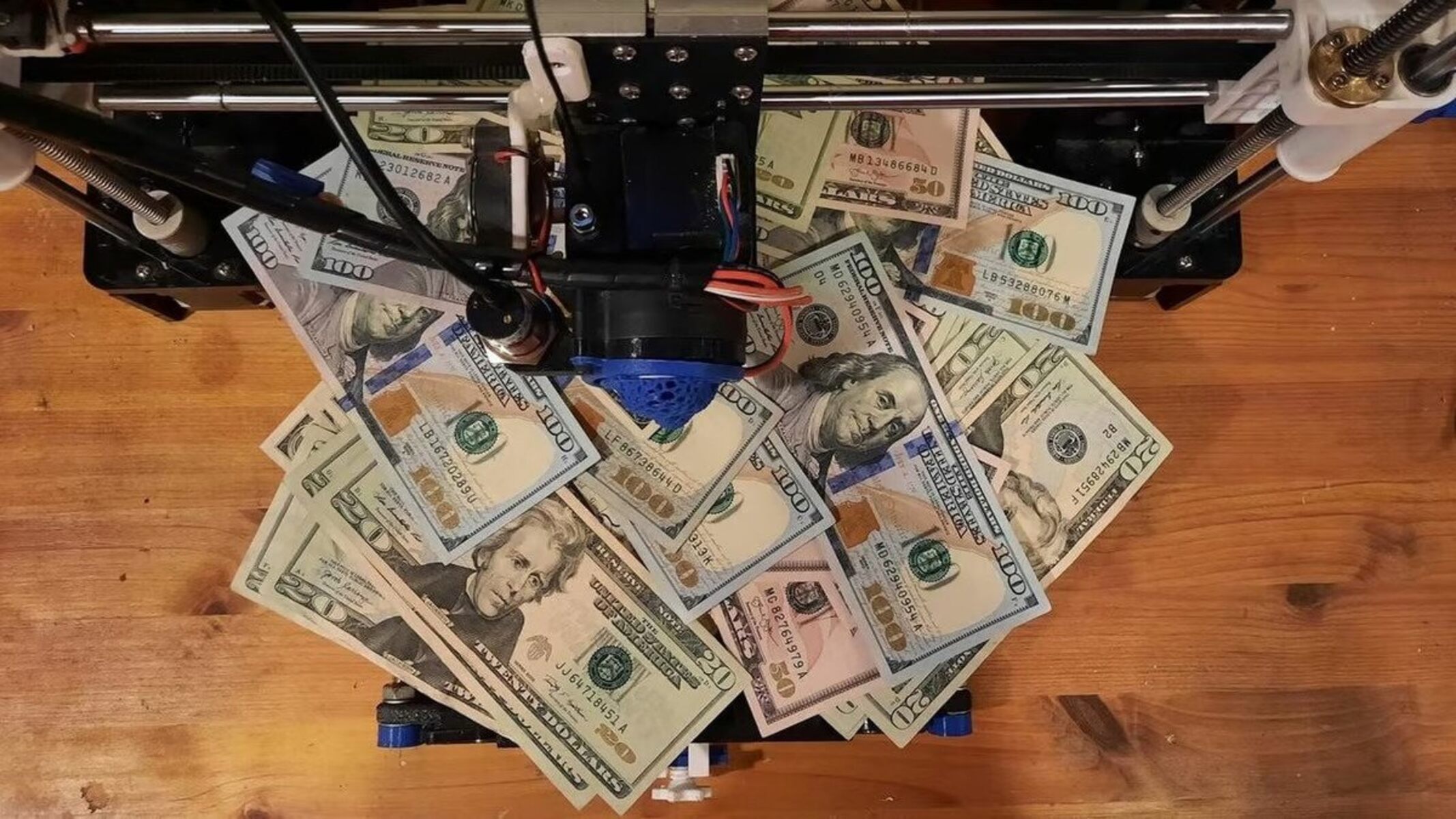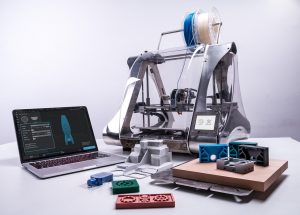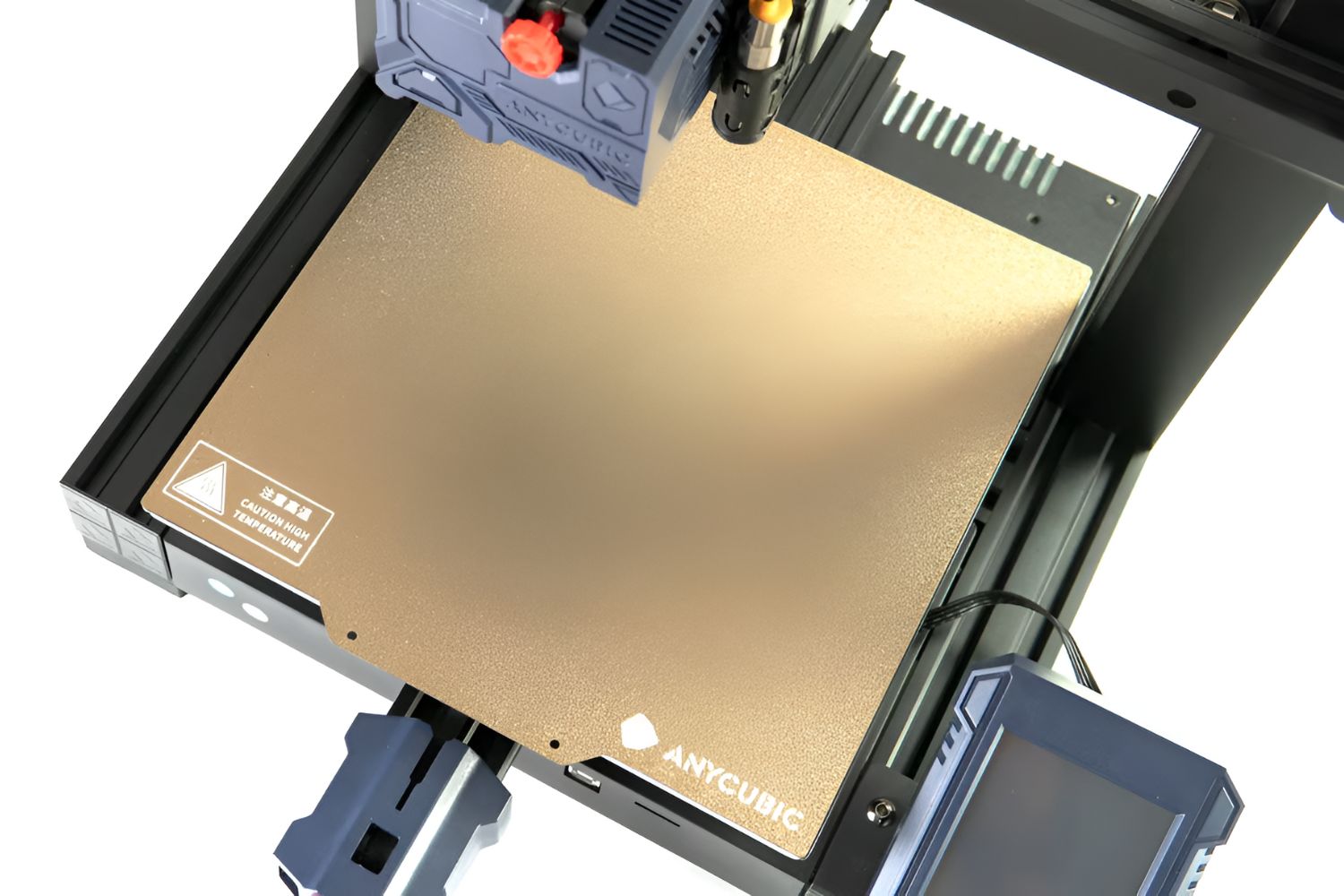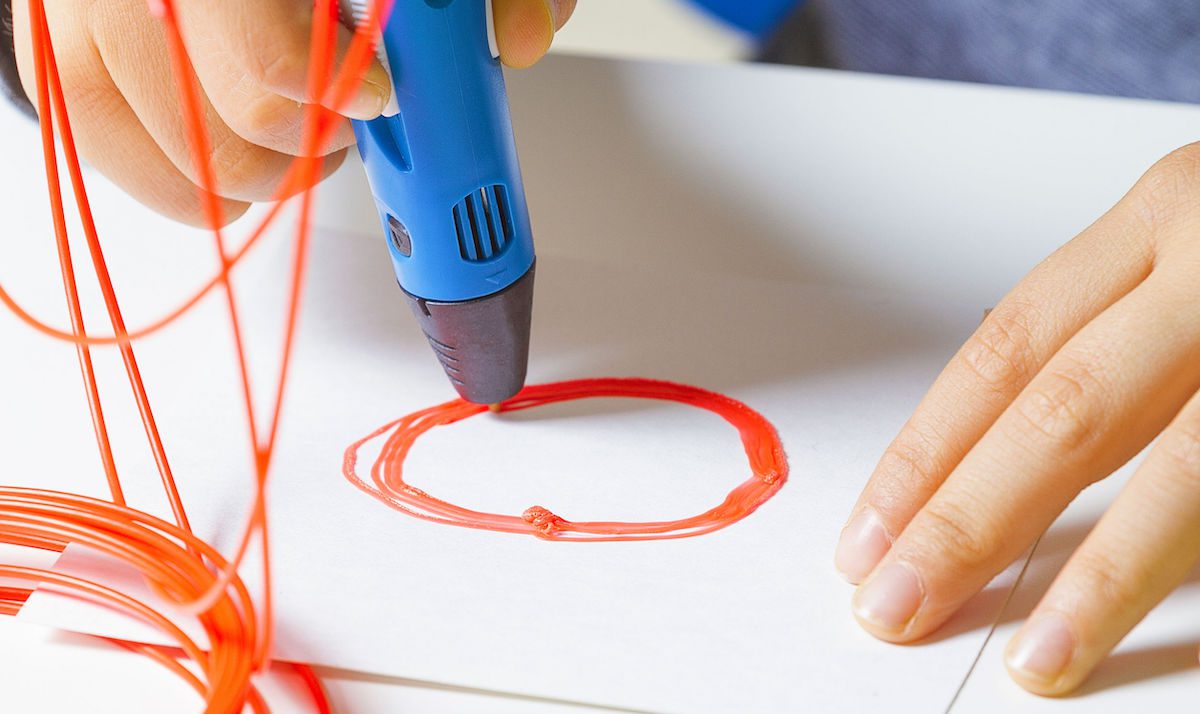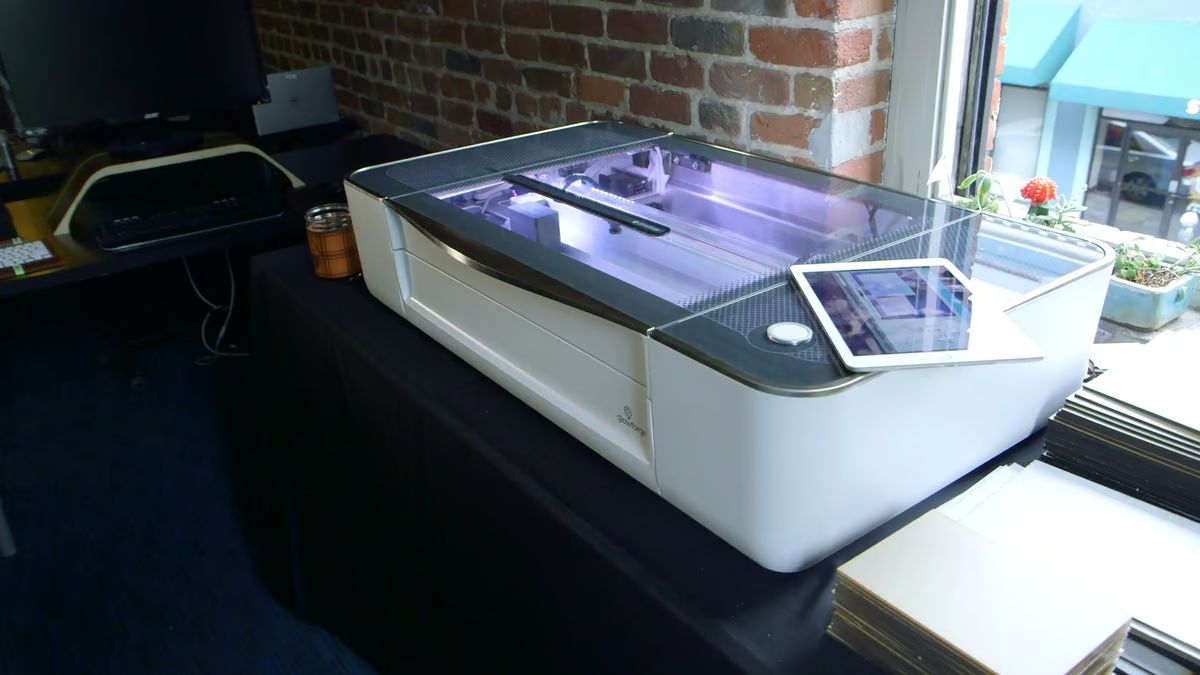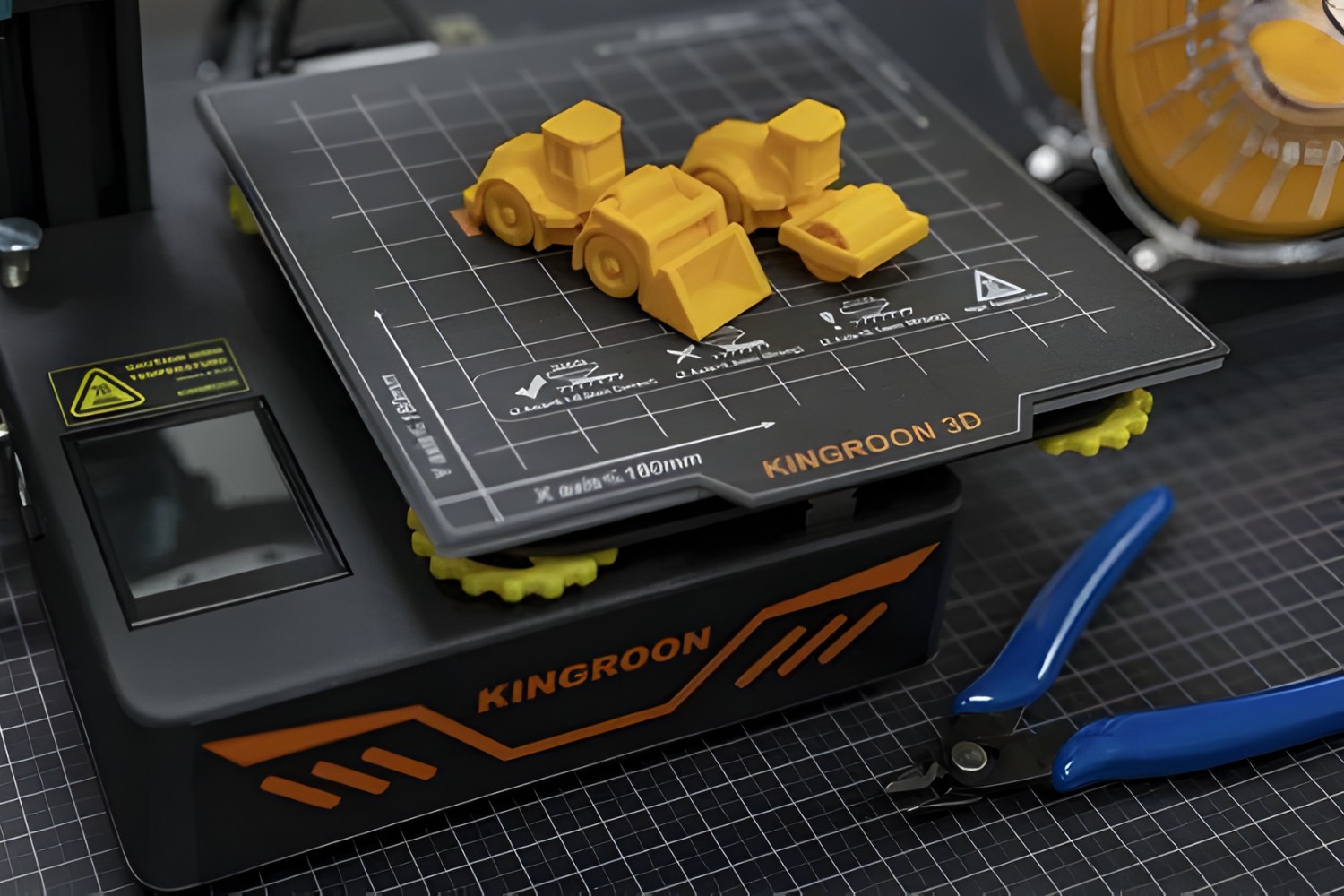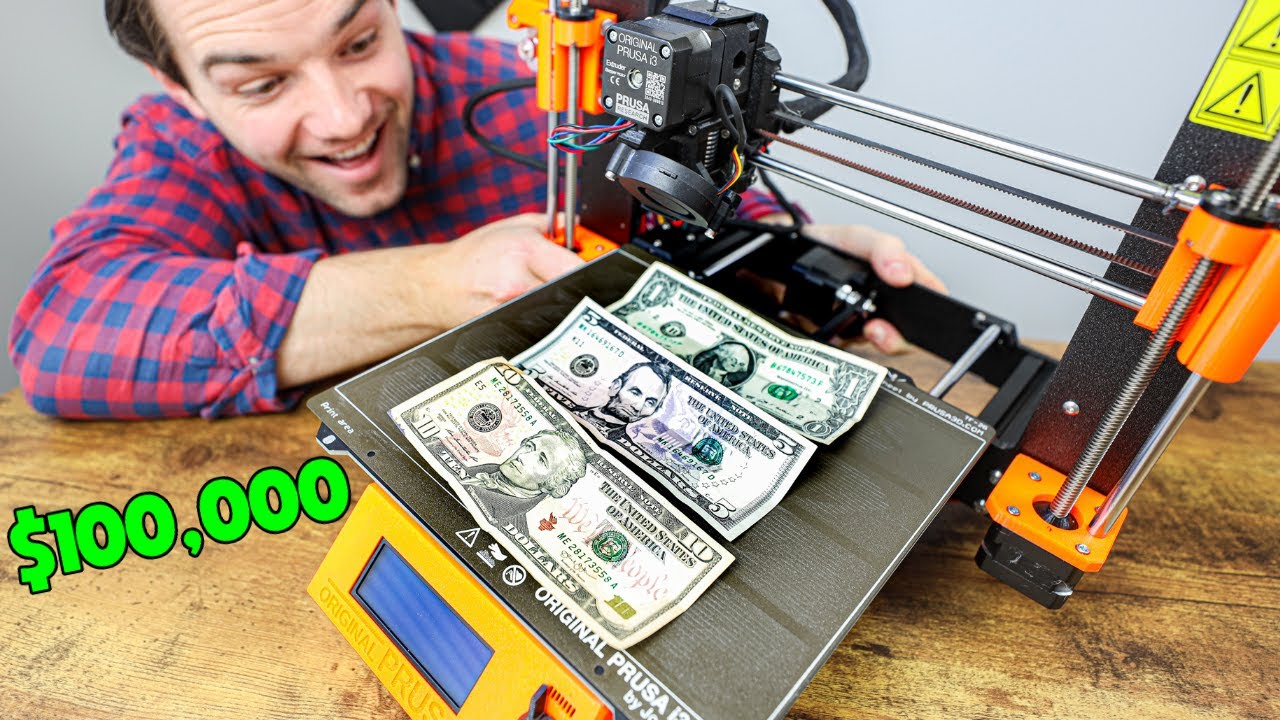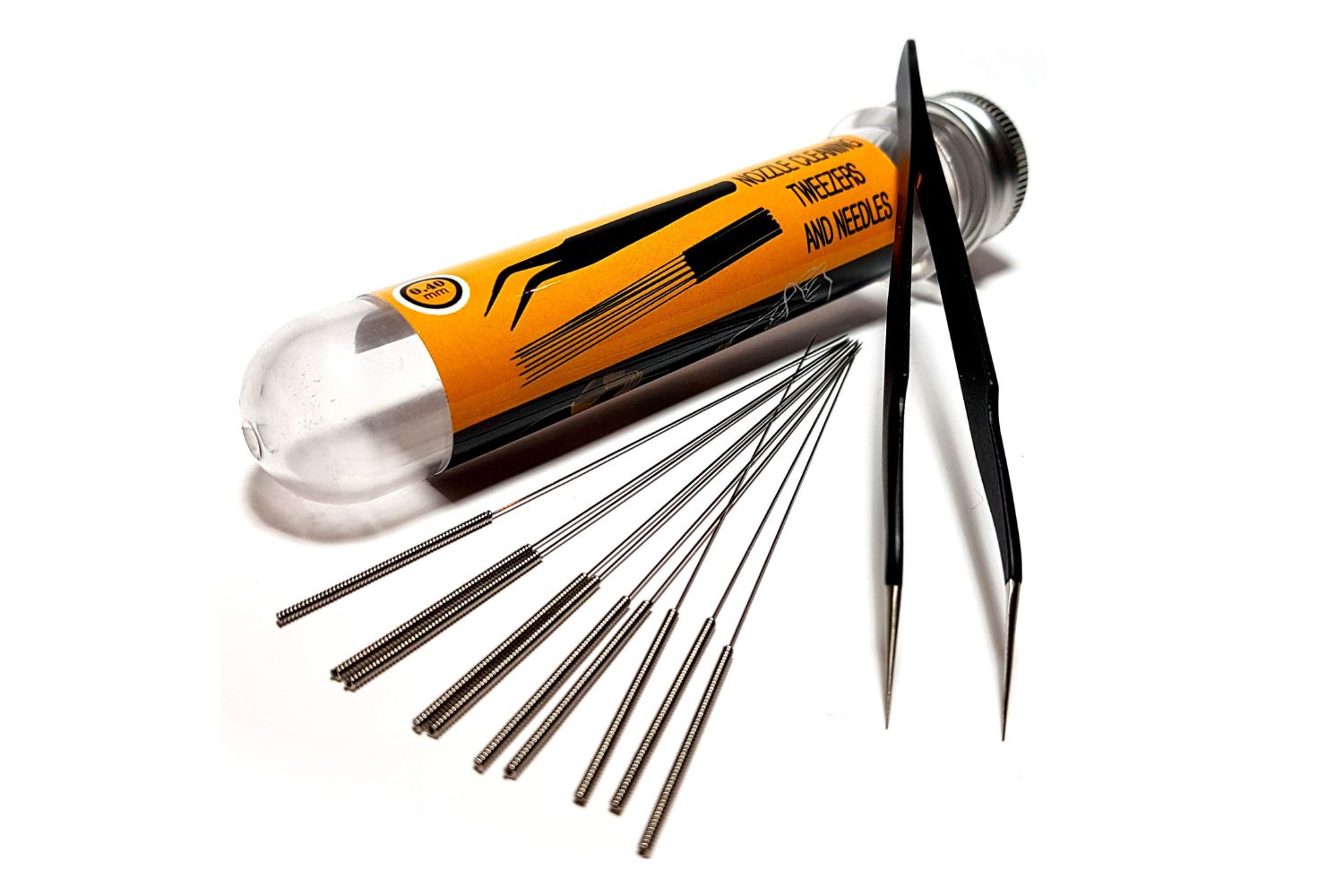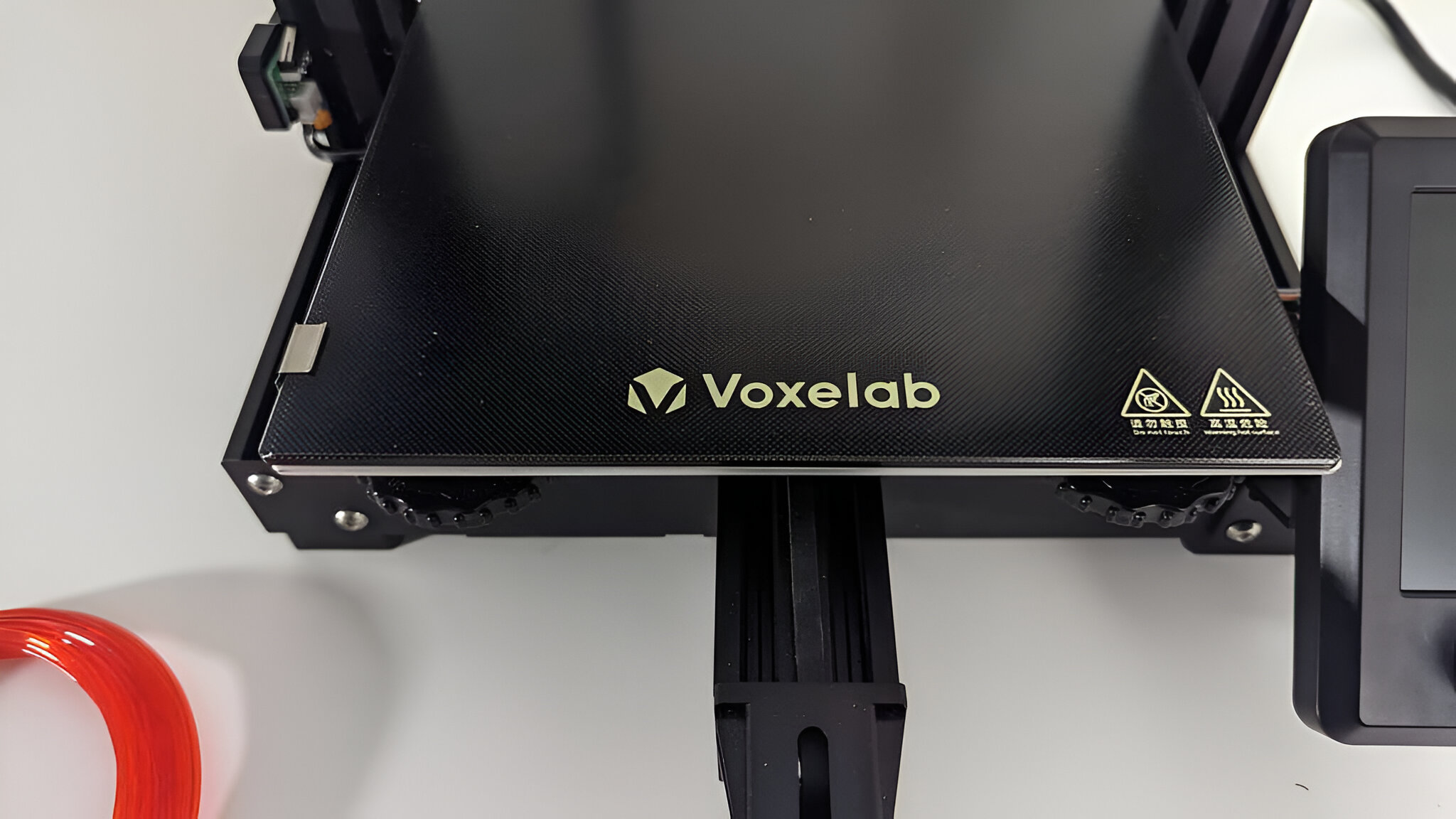Introduction
Welcome to the exciting world of 3D printing! Over the past decade, this technology has gained immense popularity, revolutionizing various industries and offering new opportunities for entrepreneurs to make money. Whether you’re a hobbyist looking to monetize your passion or a business-minded individual seeking a profitable venture, 3D printing provides a unique avenue for creativity and entrepreneurship.
In this article, we will explore how you can harness the power of 3D printing to generate income and turn your ideas into tangible products. From selecting the right equipment and materials to setting up an online store and effectively marketing your creations, we will guide you through the process step by step.
Before we delve into the nitty-gritty of making money from 3D printing, let’s quickly understand what it entails. 3D printing, also known as additive manufacturing, is a process of creating three-dimensional objects by layering materials based on a digital design. This technology allows for the production of complex shapes and structures, opening up a world of possibilities for product development, prototyping, and customization.
Nowadays, the cost of 3D printers has significantly decreased, making them more accessible to individuals and small businesses. This affordability, coupled with the ability to print objects of varying materials, has led to a surge in interest and demand for 3D printed products. From personalized jewelry and home decor to functional prototypes and spare parts, the market for 3D printed items continues to expand.
However, entering the world of 3D printing as a means of making money can be overwhelming. It requires careful consideration and planning to ensure success. That’s where this guide comes in handy, providing you with valuable insights and practical advice to navigate the 3D printing business landscape.
So, if you’re ready to dive into the world of 3D printing and start monetizing your creativity, let’s explore the essential steps you need to take to turn your hobby or business idea into a profitable enterprise.
Finding the Right 3D Printer
Choosing the right 3D printer is a crucial step in your journey to make money from 3D printing. With numerous options available in the market, it’s important to consider your specific needs and budget before making a purchase.
When selecting a 3D printer, there are several factors to consider:
- Print Quality: The print quality of your 3D printer determines the level of detail and precision in your prints. Higher-end printers often offer better resolution and accuracy, but they may come at a higher cost.
- Print Speed: The speed at which your printer can produce objects is another important consideration. If you plan to handle large volumes or time-sensitive orders, a printer with faster print speeds can help you meet demand efficiently.
- Build Volume: The build volume refers to the maximum size of objects that the printer can produce. Consider the size and types of items you plan to print to ensure that your chosen printer can accommodate your needs.
- Supported Materials: Different printers support various types of materials, such as PLA, ABS, nylon, or even metal. Depending on the products you intend to create, ensure that your printer is compatible with the appropriate materials.
- Price: Price is a crucial consideration for many aspiring entrepreneurs. Set a budget and research printers within that range, weighing the features and capabilities they offer. Remember that higher-priced printers often offer more advanced features and better print quality.
It’s also worth considering the availability of customer support and the reputation of the manufacturer. Look for reviews and testimonials from other users to get insights into the reliability and durability of a particular printer model.
Furthermore, if you’re new to 3D printing, it may be beneficial to choose a printer that is beginner-friendly and comes with user-friendly software. This will help you get started quickly and minimize the learning curve.
There are various types of 3D printers available, including FDM (Fused Deposition Modeling), SLA (Stereolithography), and SLS (Selective Laser Sintering), each with its own advantages and limitations. Research and consider the specific requirements of your business to determine which printing technology best suits your needs.
Ultimately, finding the right 3D printer requires careful consideration of your budget, print requirements, materials, and support. Take your time to compare different models, seek recommendations, and read reviews to make an informed decision.
Choosing the Right Filament
Once you have selected the appropriate 3D printer, the next step is to choose the right filament. Filament is the material that is used to create the physical object in 3D printing. There are various types of filaments available, each with its own unique properties and characteristics.
Here are some factors to consider when choosing the right filament for your 3D prints:
- Material Type: The material you choose for your filament will determine the appearance, strength, and functionality of your printed objects. Common filament materials include PLA (Polylactic Acid), ABS (Acrylonitrile Butadiene Styrene), PETG (Polyethylene Terephthalate Glycol), and TPU (Thermoplastic Polyurethane).
- Print Quality and Detail: Different filaments may produce different levels of detail and surface finish. If you require high-resolution prints, look for filaments that offer excellent layer adhesion and low shrinkage.
- Strength and Durability: Consider the strength and durability requirements of your prints. Some filaments like ABS and Nylon offer greater strength and resistance to impact, while others like PLA may be more brittle.
- Flexibility: If you need your prints to be flexible or have some degree of elasticity, materials like TPU or TPE (Thermoplastic Elastomers) would be suitable choices.
- Specialty Filaments: Depending on your niche or customer demands, you may want to explore specialty filaments like wood-infused filament, metal-infused filament, or glow-in-the-dark filament to offer unique and eye-catching prints.
- Availability and Cost: Consider the availability and cost of the filament. Some filaments are more widely available and offer a range of color options, while others may be more expensive or limited in availability.
It’s essential to understand the specific characteristics and requirements of each filament type to make informed decisions. Research and experimentation can help you determine which filaments work best for your desired applications.
Moreover, keep in mind that proper storage and handling of filaments are crucial to maintaining their quality. Store filaments in an airtight container or vacuum-sealed bags to prevent moisture absorption, which can affect print quality.
Ultimately, the choice of filament depends on the specific needs of your prints and the preferences of your target market. Experimenting with different filaments and understanding their properties will enable you to produce high-quality and marketable 3D prints.
Creating and Choosing 3D Designs
The success of your 3D printing business relies heavily on the 3D designs you choose to create. Whether you’re creating your designs from scratch or using existing designs, it’s crucial to select designs that are not only visually appealing but also have market demand.
Here are some considerations when creating and choosing 3D designs:
- Identify Your Niche: Determine your target market and niche. Research the types of products that are in demand and align with your interests and expertise. This will guide you in creating and selecting designs that have a higher chance of attracting customers.
- Design Originality: If you have the skills and creativity, consider creating your own unique 3D designs. Original designs can set you apart from the competition and establish your brand identity. Alternatively, you can modify existing designs to make them unique.
- Quality and Functionality: Ensure that your 3D designs are of high quality and have practical functionality. Consider the purpose and usability of the products, and strive to create designs that are both visually appealing and functional.
- Printability: Pay attention to the printability of the designs. Consider factors such as overhangs, supports, and the resolution required for the design to be successfully printed. Optimize your designs for efficient and reliable printing.
- Market Research: Conduct market research to identify popular trends and customer preferences. This will help you gauge the demand for certain types of products and guide your design choices.
- Flexibility: It can be beneficial to offer customizable designs or designs that can be easily adapted to individual customer needs. This allows you to cater to a wider range of customers and potentially increase sales.
- Rights and Licensing: If you decide to use existing designs, ensure that you have the appropriate rights and licenses to use them commercially. Respect the intellectual property of others and only use designs that you have the proper permission to use.
You can find 3D designs from various sources, including online platforms, design communities, or by collaborating with designers. Don’t be afraid to reach out to designers and form partnerships or commissions to acquire unique designs for your business.
Remember that design is a continuous process, and feedback from customers can be valuable in refining your designs and meeting their needs. Pay attention to customer feedback, adapt your designs accordingly, and constantly strive to improve and innovate.
Ultimately, the key to success in creating and choosing 3D designs is finding the right balance between creativity, market demand, and practicality. With thorough research, innovation, and willingness to adapt, you can create a portfolio of designs that resonate with your target audience and drive the success of your 3D printing business.
Setting Up an Online Store
Once you have your 3D printer and a collection of high-quality prints, it’s time to take your business online and set up an online store. An online store provides a platform for showcasing your products, reaching a wider audience, and generating sales. Here are the essential steps to setting up an online store for your 3D printing business:
- Choose an E-Commerce Platform: Select a reliable e-commerce platform that suits your needs. Platforms like Shopify, WooCommerce, and Etsy offer user-friendly interfaces, customizable themes, and secure payment options.
- Create a Compelling Storefront: Design an appealing storefront that showcases your products effectively. Use high-quality product images from different angles, provide detailed descriptions, and highlight the unique features of each design.
- Organize and Categorize Products: Group your products into relevant categories to make it easier for customers to navigate and find what they’re looking for. This will enhance the user experience and increase the likelihood of conversions.
- Set Pricing and Shipping Options: Determine competitive prices for your products based on factors such as material cost, labor, and market value. Implement clear shipping options and policies to ensure transparency for customers.
- Implement Secure Payment Processing: Choose secure payment gateways that provide a seamless and secure checkout experience for your customers. Popular options include PayPal, Stripe, and Square.
- Include Customer Reviews and Testimonials: Incorporate customer reviews and testimonials to build trust and credibility. Positive feedback from satisfied customers can significantly influence potential buyers’ purchasing decisions.
- Optimize for Search Engines: Implement SEO strategies to improve your store’s visibility in search engine results. Conduct keyword research, optimize product descriptions, and ensure your online store is mobile-friendly for enhanced accessibility.
- Integrate Social Media: Connect your online store with social media platforms to leverage their marketing potential. Share product updates, engage with your audience, and run targeted advertising campaigns to attract more customers.
- Offer Exceptional Customer Support: Provide reliable customer support through various channels, such as email, chat, or phone. Promptly address customer inquiries, resolve issues, and maintain a positive reputation for your business.
- Regularly Update and Refresh Your Store: Keep your online store fresh and up to date by regularly adding new designs, running promotions, and incorporating customer feedback to improve the overall shopping experience.
Remember, the success of your online store relies on a combination of factors, including the quality of your products, user experience, effective marketing, and exceptional customer service. Continuously monitor and analyze your store’s performance, make necessary adjustments, and stay proactive in meeting the ever-changing demands of your customers.
Marketing and Selling Your 3D Prints
Once your online store is set up, it’s time to focus on marketing and selling your 3D prints to attract customers and generate sales. Effective marketing strategies can help you reach a wider audience, build brand awareness, and increase conversions. Here are some key steps to successfully market and sell your 3D prints:
- Create Compelling Product Listings: Craft engaging and descriptive product descriptions that highlight the unique features and benefits of your 3D prints. Use high-quality images from different angles to showcase the quality and craftsmanship of your products.
- Leverage Social Media: Utilize popular social media platforms, such as Instagram, Facebook, and Twitter, to showcase your designs, share behind-the-scenes content, and engage with your audience. Use targeted ads to reach potential customers and build a loyal following.
- Collaborate with Influencers: Collaborate with influencers or bloggers in your industry who have a strong following. This can help increase brand visibility, reach new customers, and generate sales through their recommendations and reviews.
- Create Video Content: Consider creating instructional or promotional videos to showcase your 3D prints in action. Demonstrate the functionality and versatility of your products, and provide step-by-step guides on how to use or assemble them.
- Offer Limited Editions or Customization: Create a sense of exclusivity and demand by offering limited edition prints or allowing customers to customize their designs. This can increase the perceived value of your products and attract customers who are looking for something unique.
- Participate in Trade Shows and Events: Attend industry-specific trade shows, craft fairs, or maker events to showcase your 3D prints in person. Networking with potential customers and industry professionals can lead to valuable partnerships and collaborations.
- Implement Email Marketing: Build an email list of interested customers and send regular newsletters or updates about new product releases, sales, or special promotions. Personalize your emails and provide exclusive offers to encourage repeat purchases.
- Encourage Customer Reviews and Referrals: Request customer reviews and testimonials to build trust and social proof. Offer incentives, such as discounts or referral programs, for customers who refer friends or leave reviews. Positive word-of-mouth can be a powerful tool for attracting new customers.
- Collaborate with Local Businesses: Partner with local businesses that align with your target market. Cross-promote each other’s products, organize joint events, or create exclusive offers for their customers. This can help you tap into new customer bases and increase brand exposure.
- Monitor Analytics and Adapt Strategies: Regularly analyze your marketing efforts and sales data to measure the effectiveness of different strategies. Adjust your marketing campaigns based on trends and customer preferences to optimize your reach and increase conversion rates.
Remember, consistency, creativity, and engaging with your audience are key factors in successfully marketing and selling your 3D prints. Keep experimenting with different strategies, monitor their impact, and adapt your approach based on the feedback and insights you gather along the way.
Fulfilling Orders and Shipping
Once you start receiving orders for your 3D prints, it’s important to have a well-organized process for fulfilling those orders and ensuring efficient shipping. A smooth order fulfillment and shipping system can help you provide a positive customer experience and establish a reputation for reliable and timely delivery. Here are some key steps to consider:
- Order Processing: Establish a streamlined process for order processing. Monitor your online store regularly and promptly acknowledge incoming orders. Keep track of inventory to ensure you have adequate stock to fulfill orders.
- Printing and Quality Control: Schedule printing based on the received orders. Pay attention to print quality, accuracy, and any special requirements specified by the customers. Conduct a thorough quality control check to ensure that each print meets your high standards.
- Packaging: Invest in suitable packaging materials to protect your 3D prints during shipping. Consider the fragility, size, and material of each print to determine the appropriate packaging solution. Add branding elements to the packaging for a personalized touch.
- Shipping Options: Research and choose reliable shipping carriers that offer competitive rates and reliable services. Determine the shipping options you will offer to customers, such as standard, expedited, or international shipping. Clearly communicate the available options and associated costs on your online store.
- Shipping Labels and Documentation: Generate shipping labels and any necessary documentation accurately, ensuring the correct address and contact information is used. Include any required customs forms for international shipments.
- Tracking and Communication: Provide customers with tracking numbers and shipping updates so they can monitor the progress of their orders. Establish clear communication channels to address any shipping-related inquiries or concerns promptly.
- Delivery Confirmation: Follow up with customers to confirm successful delivery of their orders. Request feedback or reviews to gauge customer satisfaction and address any issues that may arise.
- Returns and Refunds: Establish a clear policy for returns and refunds. Communicate this policy to customers and provide assistance in case of any product defects or shipping errors. Implement a process for handling returns efficiently and ensuring prompt refunds, if applicable.
- Continuous Improvement: Regularly review your order fulfillment and shipping process to identify areas for improvement. Analyze customer feedback, monitor shipping times, and assess carrier performance to ensure your process is optimized for efficiency and customer satisfaction.
Efficient order fulfillment and shipping are crucial in meeting customer expectations and maintaining a positive reputation for your 3D printing business. By prioritizing accuracy, speed, and excellent customer service, you can build trust and loyalty with your customers, leading to repeat business and positive word-of-mouth referrals.
Managing Customer Service
Providing exceptional customer service is essential for the success of your 3D printing business. Building strong relationships with your customers and addressing their concerns and inquiries promptly can lead to increased customer satisfaction, loyalty, and positive reviews. Here are some key considerations for effectively managing customer service:
- Responsive Communication: Be prompt and responsive when addressing customer inquiries, whether through email, chat, or phone. Aim to provide timely and helpful responses to ensure customer satisfaction.
- Professional and Courteous Attitude: Maintain a professional and courteous demeanor when interacting with customers. Ensure your tone is empathetic and respectful, even in challenging situations.
- Product Knowledge: Develop a deep understanding of your 3D prints and their features. Be prepared to answer questions related to product specifications, materials, and customization options.
- Order Status and Tracking Updates: Keep customers informed about the status of their orders. Provide regular updates on the progress of prints, shipping, and delivery. Offer tracking numbers and shipping notifications to enhance transparency.
- Handling Complaints and Resolving Issues: Develop a system for effectively managing customer complaints and resolving issues. Listen attentively to customer concerns, identify solutions, and offer appropriate compensation or remedies when necessary.
- Feedback Collection: Encourage customers to provide feedback on their experience with your products and services. This can help identify areas for improvement and provide valuable insights into customer satisfaction.
- Personalization and Customization: Offer personalized support and cater to individual customer needs. Provide assistance with custom orders, offer recommendations, and go the extra mile to make customers feel valued.
- Build Relationships: Focus on building long-term relationships with your customers. Engage with them on social media, follow up after purchase, and show genuine interest in their satisfaction and experience.
- Continuous Training and Improvement: Invest in ongoing training for your customer service team to ensure they have the knowledge and skills necessary to provide excellent support. Regularly evaluate and assess customer service performance to identify areas for improvement.
- Proactive Communication: Anticipate customer needs and reach out proactively with relevant updates, new product releases, or exclusive offers. Stay engaged and show your commitment to their satisfaction.
Remember that every customer interaction is an opportunity to provide a positive experience. By prioritizing effective communication, problem-solving, and customer satisfaction, you can forge long-lasting relationships with your customers and differentiate your business from competitors.
Scaling Your 3D Printing Business
As your 3D printing business grows, it’s important to have a plan in place for scaling your operations. Scaling allows you to meet increasing demand, expand your customer base, and maximize your profitability. Here are some key steps to effectively scale your 3D printing business:
- Invest in Additional Equipment: As demand grows, consider investing in additional 3D printers to increase your production capacity. This will enable you to fulfill orders more efficiently and reduce lead times.
- Optimize Workflow and Processes: Continuously evaluate and refine your workflows and processes to increase efficiency. Identify bottlenecks and implement improvements to streamline order fulfillment, printing, and shipping.
- Automate Repetitive Tasks: Implement automation tools and software to handle repetitive tasks, such as order processing, inventory management, and shipping label generation. This can free up time for you to focus on strategic activities.
- Expand Product Offerings: Diversify your product offerings to attract a wider customer base. Conduct market research to identify new trends, niches, or opportunities that align with your business. Introduce new designs, materials, or customized options to cater to different customer preferences.
- Form Partnerships: Explore opportunities to collaborate or partner with other businesses in complementary industries. This can help you reach new customers, share resources, and expand your market reach.
- Implement a Quality Control System: Develop and implement a robust quality control system to maintain consistency and ensure the high quality of your 3D prints. This will help you meet customer expectations as you scale.
- Outsource Non-Core Tasks: Consider outsourcing non-core tasks, such as accounting, packaging, or shipping, to third-party service providers. This allows you to focus on your core competencies and allocate resources more efficiently.
- Build a Reliable Supply Chain: Establish relationships with reliable suppliers for your filament, packaging materials, and other necessary components. A stable supply chain ensures consistent access to materials and reduces the risk of production delays.
- Invest in Marketing and Advertising: Allocate resources to expand your marketing and advertising efforts. With a larger customer base, it’s important to increase your visibility through targeted ads, content marketing, and social media campaigns.
- Monitor Key Metrics and Data: Continuously monitor key metrics, such as sales, conversion rates, customer retention, and production costs. Analyze data to identify trends, spot opportunities, and make data-driven decisions to further optimize your operations.
Scaling your 3D printing business requires careful planning, resource allocation, and adaptability. It’s crucial to maintain a focus on delivering quality products and excellent customer service throughout the scaling process. By implementing efficient workflows, expanding your product offerings, and optimizing your operations, you can successfully grow your 3D printing business and thrive in a competitive market.
Conclusion
Embarking on a journey to make money from 3D printing can be both exciting and rewarding. With the right tools, strategies, and mindset, you can turn your passion for 3D printing into a profitable business venture. Throughout this guide, we’ve explored the fundamental steps involved in monetizing your 3D printing skills and establishing a successful enterprise.
We started by emphasizing the importance of finding the right 3D printer and selecting the appropriate filament. We then discussed the significance of creating and choosing 3D designs that appeal to your target market. Setting up an online store, implementing effective marketing strategies, and providing exceptional customer service were key aspects covered to maximize sales and build a loyal customer base.
Furthermore, we delved into the importance of efficient order fulfillment and shipping, as well as the potential for scaling your 3D printing business to meet growing demand. By continuously improving your processes, expanding your product offerings, and investing in marketing and advertising, you can position your business for long-term success.
Remember that entrepreneurship is a journey, and persistence is key. Building a sustainable 3D printing business takes time and effort. Stay creative, adapt to market trends, listen to customer feedback, and never stop learning and improving.
As you continue on your entrepreneurial path, keep exploring new techniques, materials, and designs to stay ahead of the curve. Embrace challenges and setbacks as opportunities for growth and innovation. Your dedication and commitment to quality will set you apart in the competitive world of 3D printing.
So, take the knowledge and insights you’ve gained from this guide, apply them in your business, and watch as your 3D printing business flourishes. The possibilities are limitless, and with commitment and perseverance, your dreams of making money from 3D printing can become a reality.







